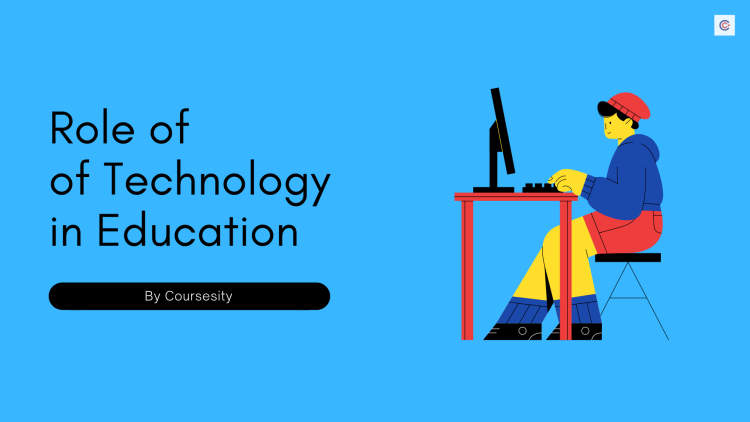For decades, the role of technology in education has been rapidly evolving. We are now at a point where educational tools are being significantly enhanced by technology to transform the way people learn in the United States. The use of AI-driven learning applications, online learning platforms, and digitally based educational materials are now staples of American education.
This article explores the role of technology in modern U.S. education. We will look at how educational technology has changed the way the U.S. approaches learning, how it has impacted the development of knowledge, and how it can be leveraged to improve student outcomes.
Impact of Technology on Education in the US
In recent years, technology has had a profound impact on education in the United States. This includes both how families access the school system and how children are taught in the classroom. Technology in the US has changed the way students learn, how teachers teach, and how parents are involved in their children’s development.
For parents, technology has made it easier and faster to stay connected with their children’s schools. Parents can now access school websites to access information about their child’s school, grades, and activities. They can contact their child’s teacher, stay up to date on their child’s progress, and connect with other parents. Technology has also made it easier for parents to find out about school news and events to participate in.
In the classroom, technology has opened up a whole world of learning opportunities. Classrooms are now equipped with computers, tablets, and interactive whiteboards. Students can use these tools to explore online resources, complete online projects, and communicate with each other. Technology has also made it easier for teachers to access a variety of educational materials and to give students more personal attention.
Technology in the US has had a significant impact on the quality of education. With tools like interactive whiteboards and digital projectors, teachers can create engaging and immersive learning experiences. Technology has also allowed teachers to create virtual classrooms, so that they can connect with students from anywhere in the country. This allows students to engage in classwork even when they are not physically present in the classroom.
Finally, technology has shown the potential to revolutionize the way students are assessed. Tools such as computer-based tests, online quizzes, and adaptive learning platforms, allow teachers to quickly assess the learning progress of each student. This helps improve the overall quality of education, by ensuring that each student is receiving the individual attention they need.
Benefits of Introducing Technology in the Classroom

Technology has become an integral part of modern US education and introducing language to students in the classroom has numerous advantages. Technologies such as iPads, tablets, and computers can help students learn at their own pace, allow them to access internet resources, develop collaboration and communication skills, allow teachers to track student progress, and enable a more interactive approach to teaching. Let’s look at some of the main benefits of introducing technology in the classroom.
Individualized learning
Using technology in the classroom allows teachers to create individual or group-based learning plans tailored to each student. Students can work at their own pace and track their own progress. Teachers can adjust the learning goals according to the developmental stage of each student, and adjust the learning activities and resources to meet their needs.
Better Access to Educational Resources
Technology makes it easier for students to access educational resources such as videos, audio, books, websites, and apps. Using these tools, teachers can deliver a comprehensive and engaging lesson in a relatively short amount of time. Additionally, these resources can be tailored to meet the needs of each student and allow them to explore topics more in-depth.
Collaboration and Communication
Technology tools such as email, video conferencing, and social media platforms give students and educators the opportunity to engage in collaboration and communication. Through these technologies, students can work together to complete projects, ask questions, and share ideas. This increases engagement, enhances learning results, and promotes collaboration and communication skills in students.
Better Tracking of Student Progress
Technology can help teachers track student progress and performance more effectively. Through software such as Microsoft Excel, teachers can track individual student performance and quickly identify areas that may need additional attention or resources. This allows teachers to focus their efforts on the individual needs of students and to provide targeted instruction and support.
Interactive Teaching Styles
Technologies such as presentation software, interactive whiteboards, and games make it easier for teachers to offer an interactive and engaging teaching style. This helps to keep students engaged and encourages them to participate and ask questions.
In conclusion, introducing technology in the classroom has many benefits, such as individualized learning, better access to educational resources, collaboration and communication, better tracking of student progress, and interactive teaching styles. Schools and educators should take full advantage of the opportunities technology presents to improve student learning and outcomes.
Challenges of Technology Integration in Education
Integrating technology into the modern classroom has become increasingly commonplace in US education. However, the use of technology can be complex and challenging for many students and educators. This article aims to explore some of the common challenges associated with technology integration in education.
One of the main challenges that educators face when integrating technology into the classroom is the design of the curriculum. Technology can be difficult to understand and work with, and if the curriculum is not tailored to the technology it can be difficult for students to understand and absorb what is being taught. Educators must also remain aware of changes in technology, ensuring that their curriculum is kept up to date with the latest advancements and techniques.
Another challenge posed by technology integration in education is the access to technology. Not all schools and educators have access to the same level of technology, from hardware such as laptops to software programs. This can lead to an uneven education experience for students, particularly those in poorer areas.
Technology can also lead to distraction in the classroom. With the easy access to digital devices and information, it can be difficult for students to stay focused on learning. Educators must work to ensure that technology is used in a way that encourages learning, rather than hindering it.
The final challenge of technology integration in education is the perception of it. Many students and teachers may be reluctant to integrate technology into their learning experience, and this can be difficult to overcome. Educators must work to create a positive environment in which technology can be a valuable learning tool.
Technology integration in education can present a range of challenges for educators and students alike. However, when utilized properly, technology can provide students with a more engaging and effective learning experience. By understanding the challenges faced by educators when integrating technology into the classroom, administrators and teachers can work to ensure that technology is used to its fullest potential.
Conclusion
It is clear that technology has become an integral part of modern US education. It has enabled students to access vast amounts of information from around the world, and enabled teachers to deliver a much more tailored and engaging learning experience. It has also enabled administrators, parents, and teachers to communicate more efficiently, helping to improve oversight and collaboration.
Technology has opened the door to a new wave of innovation in teaching and learning, which will have a far-reaching impact on the future of US education. As the technology continues to improve, and the range of tools available continues to expand, more and more schools and educators are sure to embrace some of the opportunities that it can offer.




